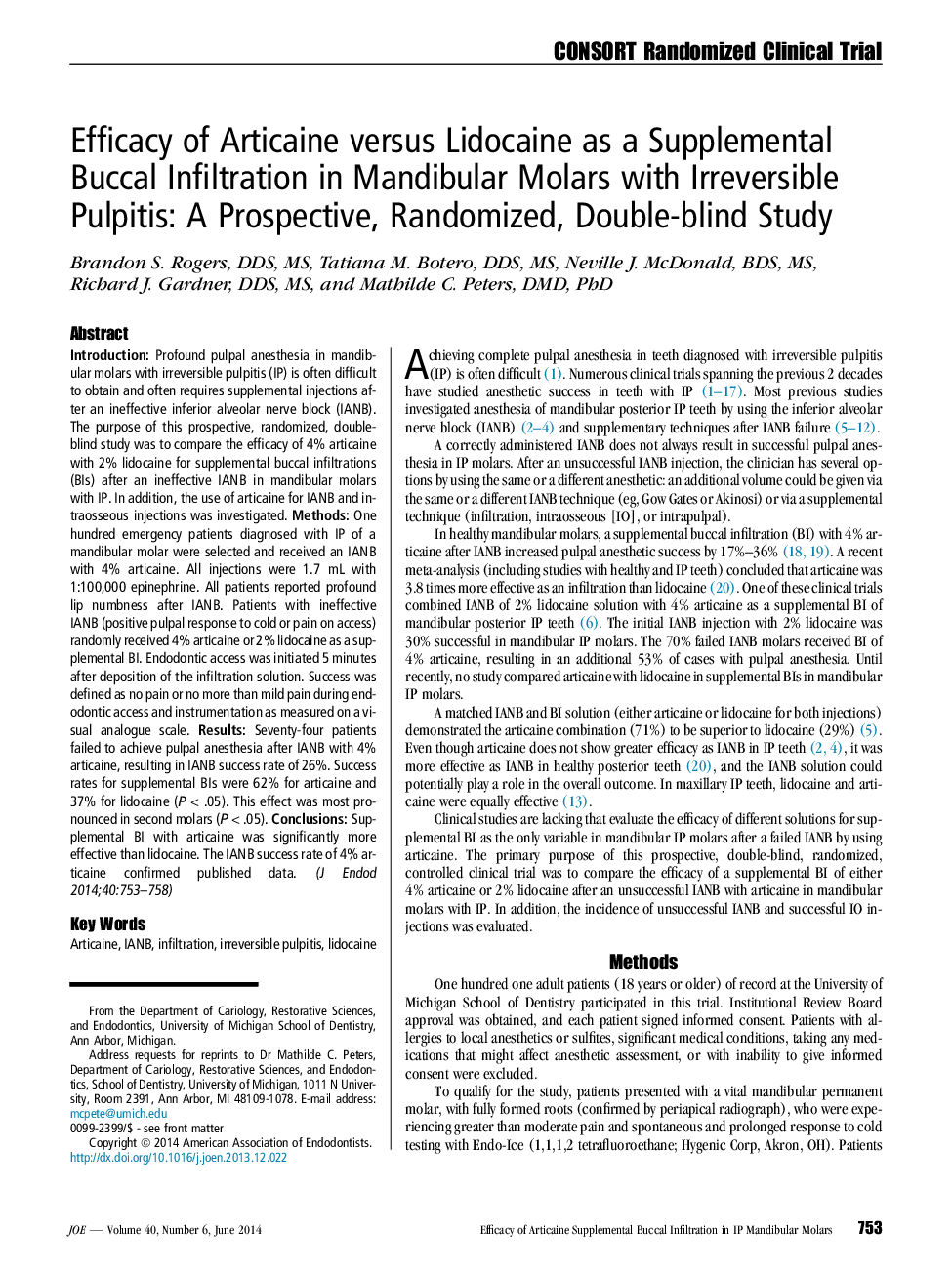| Article ID | Journal | Published Year | Pages | File Type |
|---|---|---|---|---|
| 3146857 | Journal of Endodontics | 2014 | 6 Pages |
IntroductionProfound pulpal anesthesia in mandibular molars with irreversible pulpitis (IP) is often difficult to obtain and often requires supplemental injections after an ineffective inferior alveolar nerve block (IANB). The purpose of this prospective, randomized, double-blind study was to compare the efficacy of 4% articaine with 2% lidocaine for supplemental buccal infiltrations (BIs) after an ineffective IANB in mandibular molars with IP. In addition, the use of articaine for IANB and intraosseous injections was investigated.MethodsOne hundred emergency patients diagnosed with IP of a mandibular molar were selected and received an IANB with 4% articaine. All injections were 1.7 mL with 1:100,000 epinephrine. All patients reported profound lip numbness after IANB. Patients with ineffective IANB (positive pulpal response to cold or pain on access) randomly received 4% articaine or 2% lidocaine as a supplemental BI. Endodontic access was initiated 5 minutes after deposition of the infiltration solution. Success was defined as no pain or no more than mild pain during endodontic access and instrumentation as measured on a visual analogue scale.ResultsSeventy-four patients failed to achieve pulpal anesthesia after IANB with 4% articaine, resulting in IANB success rate of 26%. Success rates for supplemental BIs were 62% for articaine and 37% for lidocaine (P < .05). This effect was most pronounced in second molars (P < .05).ConclusionsSupplemental BI with articaine was significantly more effective than lidocaine. The IANB success rate of 4% articaine confirmed published data.
